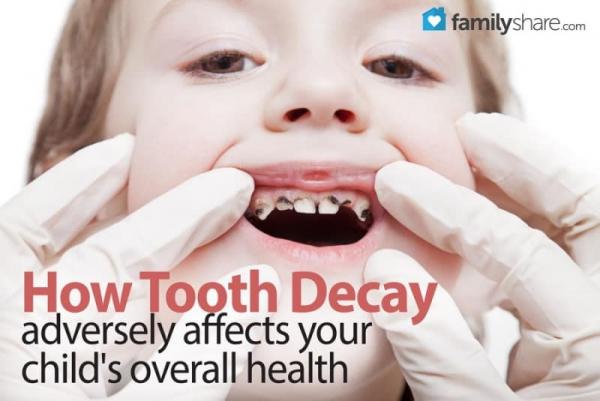
Baby Bottle Tooth Decay, Baby Bottle Syndrome, Nursing Bottle Mouth, Early Childhood Caries (ECC); these are all terms for tooth decay in a child 6 years old or younger with:
-
One or more decayed teeth.
-
Missing teeth (resulting from tooth decay).
-
Filled surfaces in any primary (baby) tooth.
Baby teeth are important. Tooth decay in baby teeth leads to tooth decay in adult teeth. According to their latest study, The Centers for Disease Control and Prevention (CDC) found:
-
A 15.2 percent increase of tooth decay in children 2-5 years old.
-
That 28 percent of preschool children have experienced tooth decay.
-
Over 4 million children nationwide are adversely affected by tooth decay in ways that go beyond the tooth decay itself.
Babies are not immune to tooth decay
A baby's teeth are at risk for decay as soon as they appear. Tooth decay is an infectious disease that all too often progresses rapidly. The upper front teeth are the most likely to be damaged. They are some of the first teeth to appear and have the longest exposure. The tongue tends to protect the lower front teeth when a baby sucks on a bottle or breast.
Things to look for when checking for tooth decay
-
Brown spots along the gum line
-
Sensitivity to cold, sweet or hard food
Decay can also form on the backs of teeth where it can go unnoticed.
The first checkup
The American Dental Association and the American Academy of Pediatric Dentistry recommend having the first dental checkup no later than your child's first birthday. The dentist will conduct a dental caries risk assessment and provide advice on taking care of your baby's teeth. Starting regular checkups at an early age can lessen the fear of your child developing tooth decay.
One of the best things you can do to ensure that your baby's teeth are healthy is to regularly clean his or her mouth. It is especially important to do this before naps and at bedtime as saliva production decreases during sleep. Saliva helps wash the teeth but low amounts of saliva allow sugar to remain on them enabling the bacteria to have a feast! Also, children who have had their mouths cleaned since birth usually don't fuss about brushing their teeth.
Tooth decay is one of the most common chronic childhood diseases
According to the U.S. Surgeon General's office, tooth decay is five times more common than asthma and seven times more common than hay fever. Studies have linked poor oral health to heart disease, premature births and low birth weight because oral health is related to overall health.
Tooth decay can lead to the following lifelong health issues:
Higher risk of decay in permanent teeth
Hospitalization/emergency room visits
Poor physical development especially height and weight
Absence from school
Decreased ability to learn
Speech impediments
Self-esteem issues
Plaque is a bacterial film on the teeth that can enter the bloodstream. There are many types of bacteria in plaque and some of them create acid when exposed to sugar. This acid eats away at tooth enamel and causes tooth decay. The goal of tooth brushing and flossing is to remove as much plaque as possible. Teaching our children about good dental hygiene habits will not only help prevent cavities but will also help keep them healthier overall!

